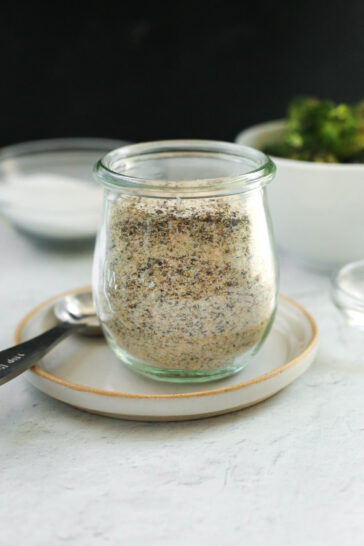Living well doesn’t need to be complicated! Here are some of my favorite grocery shopping tips for shopping smart in stores this winter.
Disclosure: This post is sponsored by Well Yes! Soups. I was compensated for my time. Thank you for supporting the brands that support Street Smart Nutrition!
Have you ever heard this advice? “Only shop the perimeter of the grocery store.”
I first heard this when I was in school to become a registered dietitian. I’d hustle to classes between track practice and my off-campus job, and usually had to scarf down cold leftovers in class or wait until I got back to my tiny studio apartment. Somewhere along the way, I wised up and realized sipping soups were a great solution for me! I could heat them up in the student lounge and enjoy something hot and satisfying. Then, I could actually focus on what I was learning!
At the time, I was too inexperienced to realize that although this “shop the perimeter” advice sounds nice, it actually means you miss out on many nourishing and budget-friendly foods. I also realized I was going against that advice every time I went to the store – I was on a shoestring budget, hadn’t quite figured out the whole cooking thing yet, and didn’t always have time to shop every week. Thankfully, I’ve come a long way since then!

I haven’t recommended this “shop the perimeter” approach to grocery shopping in years, yet I still hear this statement at least a few times a month. It’s a catchy sound-bite, but today we’re going to break down some of the reasons you should venture into the inner aisles of your grocery store.
Shelves full of satisfying foods await!
Why You Shouldn’t Shop the Perimeter
Alright, let’s pause for a second so I can clarify.
I don’t mean you should never shop the perimeter of your grocery store. After all, that’s usually where you’ll find the fresh produce, the protein and dairy coolers, and even the deli for convenient ready-to-eat dishes. That’s some good stuff!
What I actually mean, is don’t only shop the perimeter of the grocery store. As nice as it would be to enjoy recipes made with 100% fresh ingredients 100% of the time, it’s just not practical for most of us.
It usually comes down to challenges like:
- Budget. Sometimes it’s more affordable to purchase shelf-stable, packaged items or buy in bulk, especially if certain foods are out of season (like fresh produce or seafood).
- Time. Grocery shopping can feel like an all-day excursion in and of itself sometimes! When the clock is ticking and your appetite (or family!) is telling you it’s time to eat, we don’t always have the time to prep a meal from scratch.
- Energy. Even if time and money weren’t a limiting factor, let’s be real: sometimes you just don’t feel like cooking. Or maybe it’s not the cooking, but the cleaning! That’s OK. There’s no rule that says you must cook from scratch every time the opportunity arises.
For these reasons, I strongly advocate for shopping the inner aisles of the grocery store in addition to the perimeter. Toss that outdated advice and read more of my best grocery shopping tips.

Street Smart Shopping Tips
There are so many benefits to browsing the entire grocery store. Here are some of the main reasons I recommend it:
- Shop more efficiently. Most major retailers follow a similar layout, and even if your store is different, you’ll quickly start to get familiar with where certain items are located. Rather than circling back for something you missed, you can make a serpentine pattern up and down the aisles to access whatever you need – both on the perimeter AND in the aisles!
- Enjoy more variety. As I mentioned, you can get tons of fresh options if you stick to the perimeter, but you can find just as much (or more) variety in the aisles. Canned, frozen, dried, bulk, and other packaged foods can be just as nourishing as fresh. Plus, they come with the added benefit of being less perishable. That means they won’t spoil as quickly and you may find yourself saving some money! At the very least, you may get away with making fewer trips to the grocery store.
- Save time. Speaking of saving, many of us are mindful of saving time these days. If you want to minimize your time in the store, this can be a great advantage for the same reason listed above. It’s time to work smarter, not harder!
Read more of my grocery shopping tips in this post: Best Practices for Shopping, Storing, and Cooking.
If that’s not enough to entice you into the aisles, maybe featuring one of my favorite items will do it!
As Close As You Can Get To Homemade
Like I said, I’ve come a long way from my early days of trucking across campus with my sipping soup in hand. Now, I’m such a soup aficionado that I even wrote a cookbook on the topic!
But just because I’ve mastered the technique for soups and stews of all sorts, doesn’t mean I want to cook from scratch all the time. That’s where Campbell’s Well Yes! soups come into play. Campbell’s has been a household name for decades, and the Well Yes! lineup has 21 favors to keep the tradition going. No matter what your taste preferences are, there’s something for you!
Convenience is a great thing but at the end of the day, I value taste and quality as much as anything else. I learned the Well Yes! soups deliver on average 1/3 of your daily recommended vegetable servings in both their pre-portioned sipping soup cups, and canned soups!
Here’s where I’d insert that surprised face emoji, because wow, that’s a pretty impressive amount.

These soups are as close as you can get to homemade without actually being, well, homemade. The thoughtful ingredients really shine, especially in these two flavors I featured in this post: Sweet Corn & Roasted Poblano and Roasted Red Pepper & Tomato. I’ve tried pretty much all of them at this point but keep coming back to these because they’re so dang delicious!

Living well doesn’t have to be complicated. Take these grocery shopping tips with you next time you head to the store, and ditch the outdated advice to “shop the perimeter”. After all, you won’t be able to find these delicious Well Yes! soups if you don’t!
What are some of your favorite foods from the middle aisles? I’d love to hear what you always add to your shopping list!













